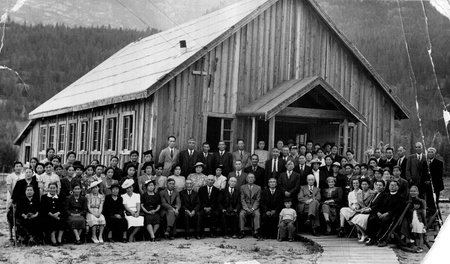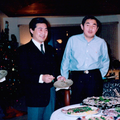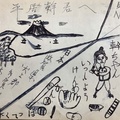Christian missions came quickly to the early Japanese immigrant community in Vancouver. The earliest known missionary activity among them was conducted by an itinerant minister from the United States, Matsutaro Okamoto, in 1892. Three years later he was succeeded by Goro Kaburagi, who eventually affiliated with the Methodist church. It seems that Christianity spread rather quickly and a large number of the Japanese Canadians came to identify themselves as Christians, although there were various levels of devoutness and commitment.1 The Methodists, who in 1926 would amalgamate into United Church of Canada, were to become the largest Christian group in the Japanese immigrant community, followed by the Anglicans.2
The Anglican Church of Canada seems to have begun its work among Japanese Canadians about ten years later than the Methodists. Despite ambivalent feelings among its white British membership about the influx of Japanese into the province of British Columbia (BC), it established its first mission (Holy Cross Mission) to them at St. James Church in 1903. A second mission was started in 1909 in the Fairview district and ministered mainly to the growing number of Japanese women and children. The Holy Cross Mission grew steadily and was soon seeking space to expand. In 1914 F.W Cassilis Kennedy, formerly a missionary in Japan, came to Vancouver to assist with the Japanese Canadian missions.
The ambivalent attitude of the Anglican Church toward the Japanese immigrants continued. In fact, while a small minority of Anglican leaders advocated on their behalf, some of the most famous leaders of the anti-Japanese movement in Vancouver also happened to be prominent members of the Anglican Church. Missionary outreach to the Japanese was supported, but they were unwelcome in the white Anglican churches.3 However, the Anglican missions to the Japanese continued to grow. The Provincial Board of Missions to Orientals (PBMO) was established in 1915, and by 1927 there were five missions to the Japanese in BC, all under the leadership of Kennedy.
Kennedy, despite frail health, was an outspoken and respected advocate for the Japanese and other oriental immigrants. He passed away in 1930 and was succeeded in 1931 by William Gale, also a former missionary in Japan. Gale was less outspoken than Kennedy but served the Japanese immigrant community tirelessly, and growth continued under his leadership. By 1941 there were about 1500 Japanese Canadian Anglicans in the Vancouver area. Yet their diocese (New Westminster) still remained very ambivalent towards them.
Ironically, one of the most outspoken leaders of the anti-Japanese movement in Vancouver was alderman Halford Wilson, a very prominent leader in the Anglican Church as a member of the Executive Committee and PBMO, and whose father, a former priest of St. Michael’s Anglican Church, had also been a leading antagonist against Japanese and other Asian immigrants. Fortunately, his anti-Japanese campaign did not go completely unopposed by some of the other PBMO members.
After Canada declared war on Japan and announced its plan to forcibly displace Japanese Canadians from the west coast, the PBMO, while not condemning it, did go so far as to urge the government to treat the displaced Japanese Canadians in a just manner and to allow unfettered access to them by Christian missionaries.4 This was in some contrast to the even more ambiguous and almost silent stance of the top leadership of the Anglican diocese.
When the internment began, many of the Anglican missionaries and teachers who had been working among the Japanese immigrants on the coast voluntarily followed them to their life of hardship in the camps. The Anglican Church cooperated with the Roman Catholic Church, United Church, Salvation Army, and Buddhist Church in allotting camps to the care of each church. The Anglican Church was assigned the camps in the Slocan area, where, under harsh conditions, the missionaries and teachers soon set about various church activities including establishing kindergartens and high schools.5 Even as the war was drawing to a close in 1945 and the government was proceeding with its policy of forced dispersal of the Japanese Canadians to eastern Canada, the Anglican missionaries continued to follow and serve them.6

Notes:
1. Roy (2016/2017, 106) suggests that many of those who utilized the various church outreach programs were more interested in the “social services than in Christianity”. However, there clearly were genuine conversions and a growing core of devoted and active adherents which included the parents and maternal grandparents of the main subject of this paper, Basil Izumi.
2. For a more detailed description of the history of Methodist attitudes toward and missions to the early immigrants (and particularly to the Japanese immigrants) as well as a good summary of previous literature on the subject, see Yoshida (1992). Two interesting historical overviews of the Anglican Church and Japanese Canadians are Nakayama (1966, 26-48) in English, and Ogawa (2011, 1-17) in Japanese.
3. Nakayama, 5: “On the one hand there was a genuine anxiety on the part of officials and Church people generally to minister to the Japanese. But, on the other hand, there was a reluctance to mingle with them firsthand. Japanese missions should be undertaken but not in ordinary parish churches which were considered occidental preserves.”
4. Quoted by Roy, 116
5.The provincial government had refused to provide any education in the camps apart from elementary schools.
6. For more detailed descriptions of how the Anglican missionaries and teachers served the Japanese Canadians during the internment and dispersal periods, see Nakayama (especially 11- 15), and Ogawa, 7-13.
* This series is an abridged version of the original article titled, “A Japanese Canadian Child-Exile: The Life History of Basil Izumi,” originally published in The Journal of the Institute for Language and Culture, Konan University, Vol. 22, pp. 71-108 (March 2018).
© 2018 Stanley Kirk







